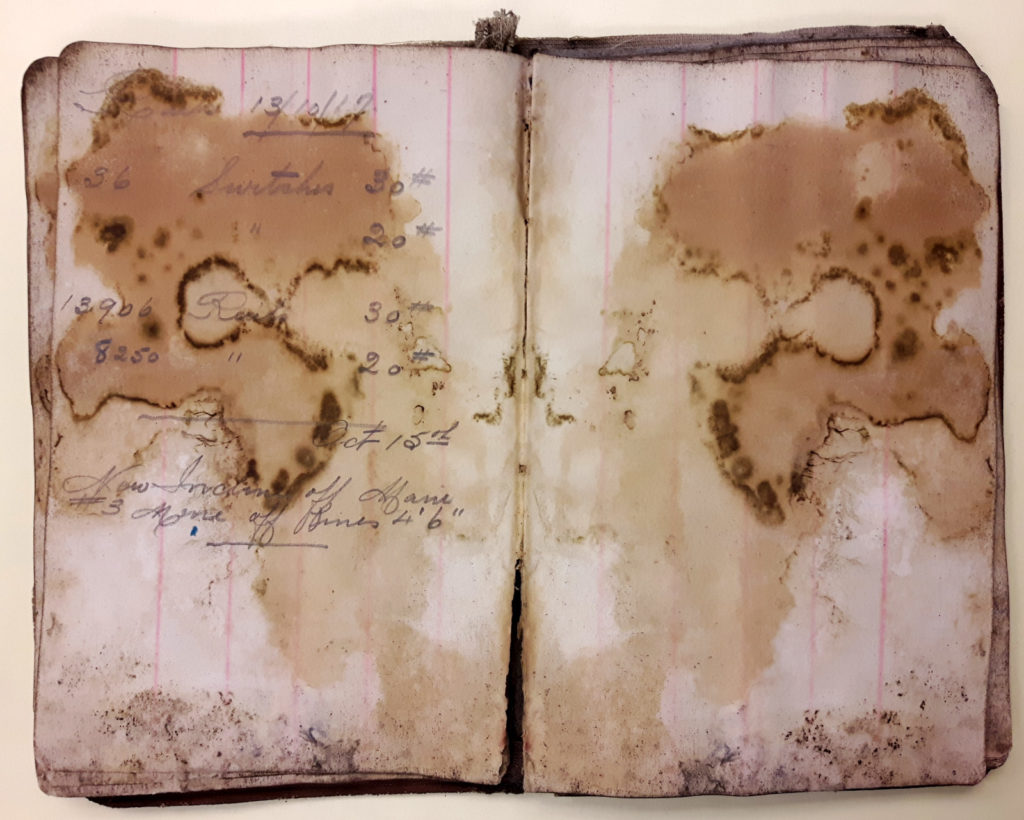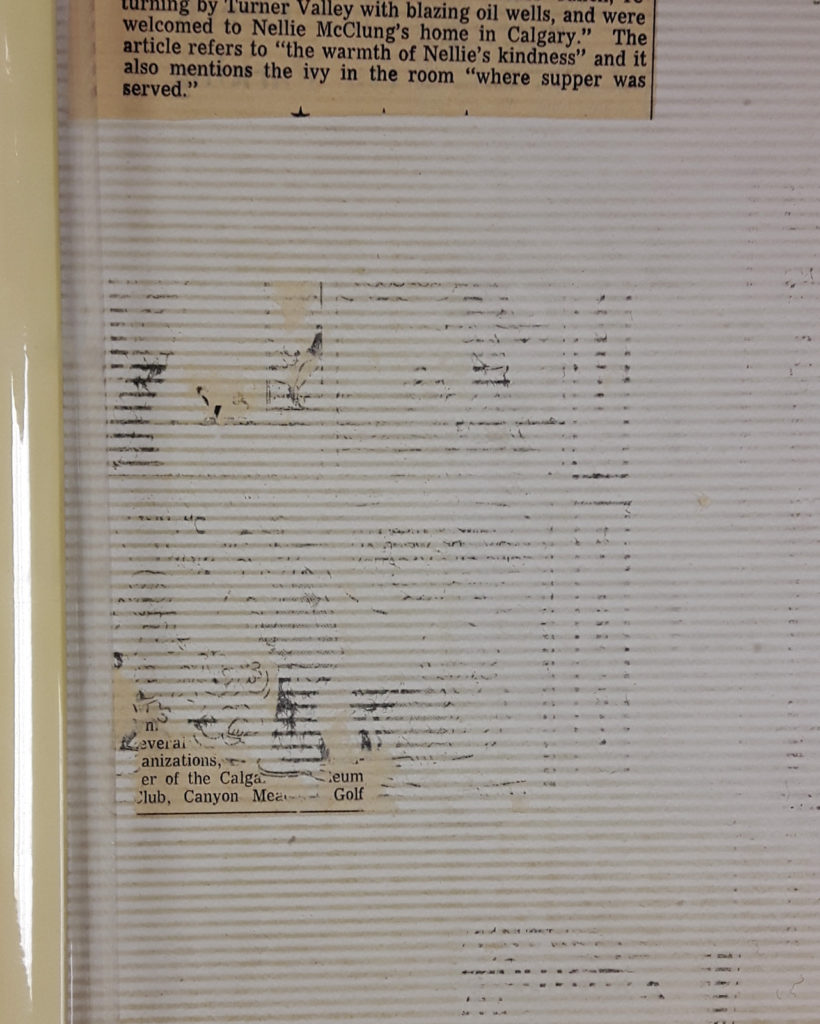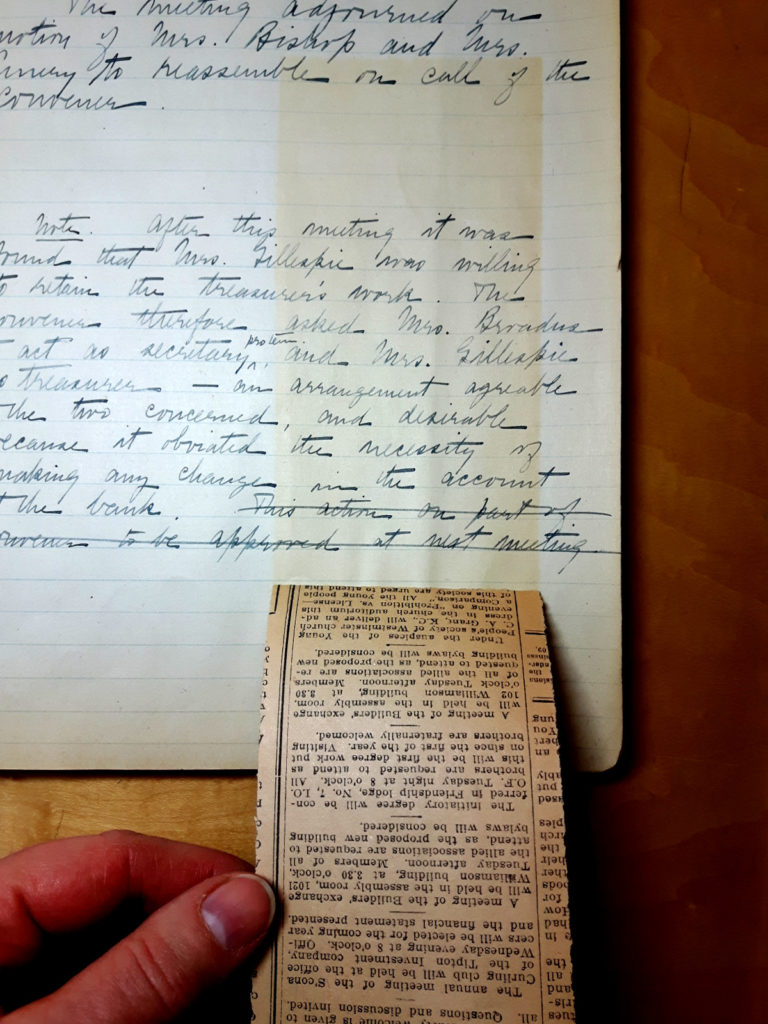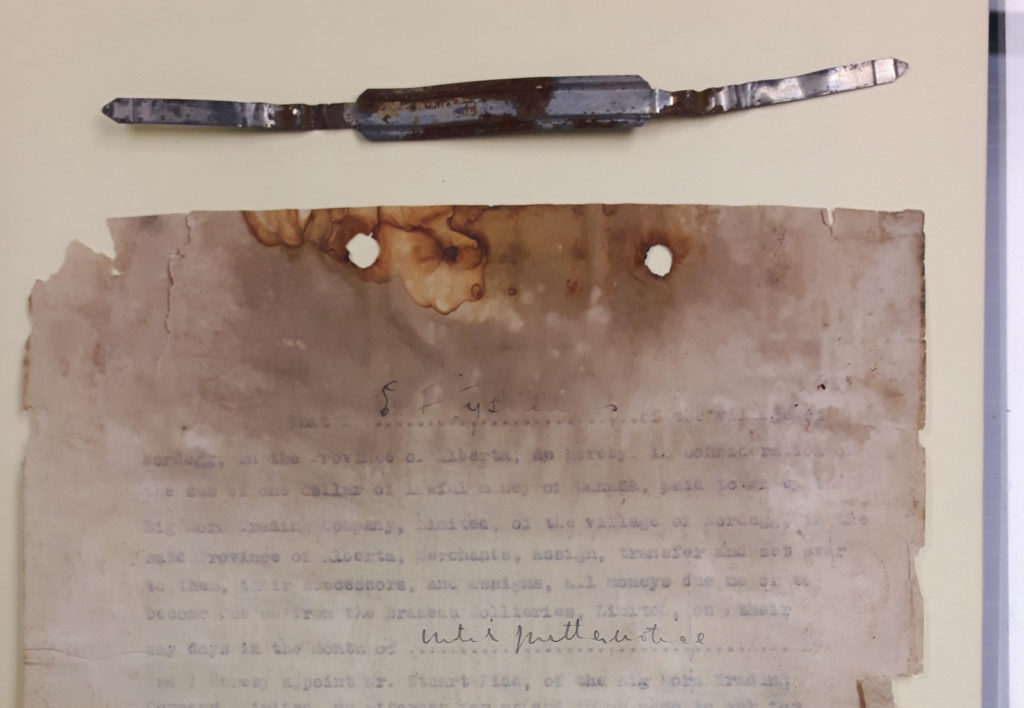
Damage from mold
In my guest post of June 9, 2018 I wrote about organizing family archives, or more to the point, not organizing them, so that a family story can be told as it was created.
In this post I am going to provide some hints to help you to preserve your family archives.
The term “archives” can include paper documents such as letters, diaries, journals & sketchbooks, notes, manuscripts, household records, volunteer and business records, maps, etc. as well as media such as photographs, films & videos, sound recordings, and electronic records.
When I worked at the Provincial Archives of Alberta, I created a document that listed the friends and enemies of preservation, and as with many things in life, the enemies are more numerous. However, they can be subdued so do not despair.

An old “magnetic” style photo album. The combination of adhesive and plastic causes deterioration as well as tearing when attempting to remove photos or documents.
I will highlight some of the basics, and you can view the entire list here, which has been updated by the Archives to include links to further information, particularly regarding electronic records.
One of the most important considerations is to store your family archives where there are no big fluctuations in temperature, so not in an attic or an unheated garage.
Basements are not ideal, but if they are finished as comfortable living spaces, and if the storage area is against an inside wall, high off the floor and not under any plumbing pipes, then that is acceptable.
Storing your family archives in acid-free enclosures, files and boxes will extend their life. The Provincial Archives of Alberta sells these types of items in their Archives Store.
Keeping valuable documents in the dark and away from sunlight and other types of ultraviolet light also extends their life. So if you want to frame any family photos or documents, make scanned copies and frame the copies.

Some highly acidic papers such as newspapers will cause staining and deterioration on adjacent items. They should be stored separately with a note indicating where they were originally located.
Thanks to Alison Freake, the Textual Records Conservator at the Provincial Archives of Alberta, for letting me visit her conservation lab to photograph a few of the usual suspects on the “Enemies of Preservation” list.

Clear adhesive tapes and many other adhesive tapes and glues cause staining and will eventually lose adhesion.
There is generally at least one family member who takes an interest in keeping their family’s archives,
but I recommend that a note be placed in the boxes that reads “If no family member wishes to retain these documents, please contact the Provincial Archives of Alberta or the City of Edmonton Archives to offer them for donation.” It is difficult to make decisions about an estate after a loved one’s death, and this helps to make one part of that process easier.
The Provincial Archives of Alberta has information on their website about how to donate archival material, and the City of Edmonton Archives can also be contacted regarding donation. You may be surprised sometimes at what archivists are interested in keeping, so don’t weed your archives before donating them. Not everything will necessarily be kept, but archivists make a professional determination about what is of historical value. Anything that is not kept can be returned to the donor if they wish.
One of the gaps in archival collections is that of documents that represent how regular people lived. There is plenty of information about what are considered to be significant public figures, but those records do not tell the stories of the everyday lives that people lived, and when historians are reconstructing a time and place, those are the details that they need.

Different types of metal fasteners can rust and create stains. Rubber bands also cause staining.
Marlena Wyman is the City of Edmonton’s fifth Historian Laureate, an archivist and a visual artist. She worked as the Audio/Visual Archivist at the Provincial Archives of Alberta for 28 years.